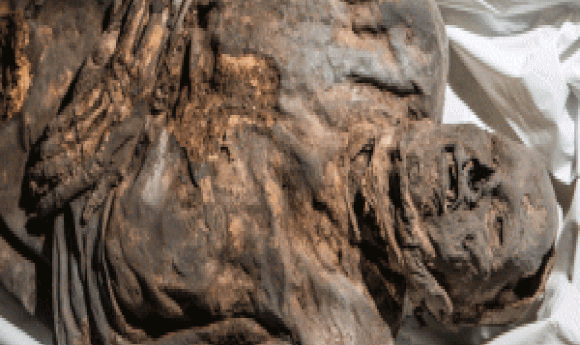Mummy helps unwrap smallpox

Is one of humanity’s most devastating diseases an ancient scourge or a relative newcomer?


A Lithuanian mummy and crypt.
Images courtesy of Ana Duggan
Thanks to a global effort that began with Edward Jenner’s vaccine in 1796, smallpox is the first—and so far only—human disease to be eradicated. The last documented case occurred in Somalia in 1977.
Smallpox’s origins have long been assumed to go back millennia, since Egyptian mummies bear pockmarked skin, and ancient Chinese texts refer to pox-like skin rashes. Now, a team of researchers has identified the variola virus, which causes smallpox, in DNA from a 17th century Lithuanian mummy and compared it with DNA from more recent strains of the virus. Their surprising findings, which they report in Current Biology, suggest that smallpox may not be so ancient.
Lead author Ana Duggan from McMaster University and her team were examining DNA extracted from the mummy to look for an unrelated virus when they found that it also contained variola sequences. “We stumbled upon it,” Duggan said. “Finding variola was surprising, and we had to convince ourselves that the sequence was real.”
After verifying the age of the mummy and tissue samples, Duggan and her colleagues reconstructed the ancient viral sequences and used molecular clock analysis to compare gene degradation with more recent variola virus strains. The mummy variola showed a similar gene degradation pattern to recent viruses.
“With the help of a medical historian on our team, we established that smallpox was not as virulent or epidemic in Europe prior to the 16th or 17th centuries,” Duggan said. “With the molecular clock, we calculated that the split between the more virulent and less virulent forms of variola occurred in the late 18th century, just before Jenner’s vaccine.”
While it is possible that Egyptian mummies also had smallpox, these findings show that 20th century strains share a recent common ancestor with the strain identified in the Lithuanian mummy, and the ancestral strain arose long after the period of the Egyptian mummies. The pockmarks on more ancient mummies may have resulted from measles or chickenpox instead. Perhaps time will tell.





